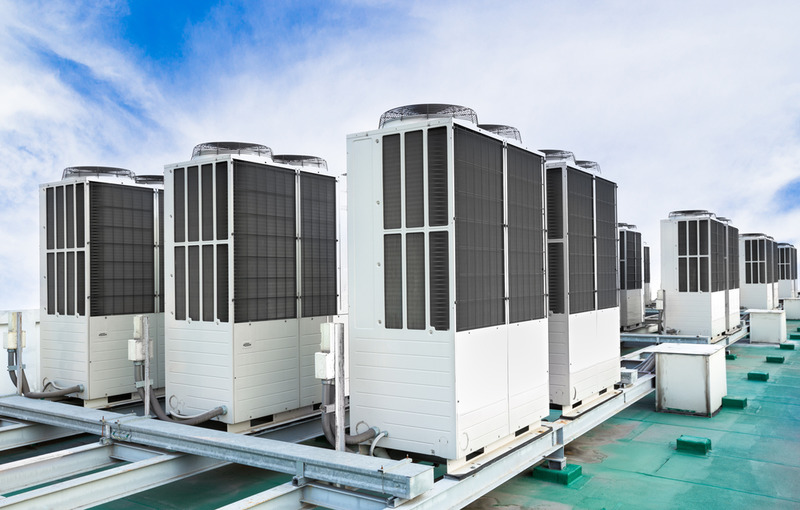The Benefits of Professional Air Conditioning Installation

Reviewing Your Area: Trick Measurements for A/c Installation
If you have actually ever located on your own in a space where the air conditioning just could not seem to stay on top of the summer warm, you could benefit from assessing your room.
Guaranteeing your air conditioning system is effectively sized and installed needs interest to vital dimensions such as room dimension, window and door dimensions, ceiling elevation, insulation quality, and airflow patterns. By understanding these elements, you can enhance your cooling system's efficiency and performance.
However how exactly do these dimensions influence your a/c installment? https://richmondhvac.co.uk/air-conditioning-repair.html
Trick Takeaways
- Properly measure space measurements for appropriate unit capability and airflow optimization.
- Pick energy-efficient windows and doors to boost insulation and decrease warm transfer.
- Make sure perfect vent positioning and unobstructed air flow for effective cooling circulation.
- Upgrade insulation to boost thermal resistance, seal spaces, and boost total system efficiency.
Area Dimension Dimensions
When measuring area size for cooling installation, make certain you accurately examine the dimensions to establish the ideal device ability. Start by taking into consideration furniture positioning within the space. Furniture can block air circulation if positioned too close to vents or the cooling system. To assure maximum cooling efficiency, arrange your furniture in such a way that promotes proper air flow throughout the area.
In addition, think about the room's design and dimension when preparing for air flow. Correct air circulation is vital for keeping a constant temperature throughout the area. Be mindful of any type of obstacles that could interrupt the flow of air, such as drapes obstructing vents or large items of furniture obstructing air flow. By guaranteeing ample space for air to distribute freely, you can make the most of the performance of your a/c device and create a comfortable atmosphere in your home.
Doors And Window Capacities
To ensure proper cooling installation, analyze the dimensions of doors and windows in the area to optimize airflow and cooling effectiveness. When assessing doors and window dimensions, take into consideration the following:
- Structure Compatibility: Ensure that the cooling device you select is compatible with the frameworks of your windows and doors. Inappropriate fit can result in air leaks and reduced energy effectiveness.
- Installment: Consider the installation procedure when selecting an a/c unit. Some devices might need particular home window measurements or added alterations for proper installation.
- Material Choice: Pick windows and doors made from materials that give excellent insulation to enhance power efficiency. Correctly shielded doors and windows can aid preserve a regular temperature level in the space.
- Power Efficiency: Go with energy-efficient doors and windows to decrease warm transfer and improve the total efficiency of your cooling system. Energy-efficient materials can enhance the air conditioning capacities of your area while reducing power expenses.
Ceiling Elevation Analysis
Assessing the height of your ceiling is crucial for determining the best positioning of a/c vents for efficient cooling distribution. When assessing your ceiling elevation, make certain to consider the clearance needed for both the ductwork and the air conditioning vents. Adequate ceiling clearance guarantees that the ductwork can be mounted effectively without any obstructions, permitting optimal airflow throughout the room.
Additionally, proper clearance above the vents makes sure that the cooled down air can circulate freely with no constraints, causing even more also cooling in the space.
When preparing the positioning of ductwork, take into account the height of your ceiling to prevent any kind of concerns with setup or performance. Properly located ductwork can aid maximize the effectiveness of your a/c system and ensure that each space gets enough air conditioning.
Insulation Analysis
Analyze the insulation top quality to enhance the performance of your air conditioning system. Correct insulation plays an important role in keeping a comfortable interior setting while making the most of power performance. Below are four bottom lines to assess when reviewing the insulation in your room:
- Thermal Resistance: Check the R-value of your current insulation to see to it it satisfies the recommended requirements for your area. Greater thermal resistance shows far better insulation high quality, which assists in minimizing warm transfer and keeping a constant temperature level.
- Insulation Placement: Check the positioning of insulation throughout your room, focusing on locations such as walls, ceilings, and floors. Properly installed insulation avoids energy wastefulness by reducing heat exchange with the surrounding setting.
- Sealing Gaps: Recognize and seal any kind of voids or cracks in the insulation to stop air leakage. Properly secured insulation boosts energy efficiency by keeping impermeable obstacles that protect against conditioned air from getting away.
- Upgrading Insulation: Think about upgrading your insulation to newer, extra energy-efficient materials. Updating can improve thermal resistance, lower energy consumption, and enhance the overall efficiency of your air conditioning system. https://richmondhvac.co.uk/air-conditioning-installation.html
Air flow Evaluation
Inspecting the air flow within your space is very important for making sure peak performance of your a/c system. Appropriate airflow circulation is essential to preserve constant temperature levels throughout the area. When assessing air movement, think about the air flow requirements of each room to assure ample air circulation.
To evaluate air movement distribution, start by looking for any kind of blockages such as furnishings obstructing vents or debris blocking duct. Poor airflow can result in inefficient cooling and home heating, resulting in discomfort and increased power costs. It is very important to deal with any problems without delay to optimize the performance of your a/c system.
In addition, comprehending the air flow demands of different rooms in your home or workplace is vital to preserving air top quality and comfort levels. Proper air flow aids remove stagnant air, odors, and contaminants while generating fresh outside air. By assessing airflow and air flow requirements, you can create an extra comfortable and healthy and balanced indoor atmosphere for every person.
Regularly Asked Concerns
Exactly How Can I Figure Out the Best Area for My A/c Device Within the Room?

When figuring out the best area for your air conditioner unit in a space, take into consideration the air conditioning capability and air circulation. Maintain the device far from obstacles that can block air flow and area it centrally in the space to guarantee even cooling down.
Perfect positioning helps disperse awesome air effectively, making best use of the device's performance. Proper positioning can make a considerable difference in just how efficiently your a/c unit cools the space.
Are There Any Details Aspects to Think About When Setting Up a Cooling System in a Multi-Level Building?
When setting up an air conditioning system in a multi-level structure, consider factors like energy efficiency, cooling down ability, placement, and accessibility.
Ensure the device is purposefully positioned to cool several levels effectively. Opt for a location that allows simple access for repair and maintenance.
Additionally, evaluate the cooling ability to ensure it can adequately cool down the entire building. These considerations will certainly aid enhance the efficiency of your air conditioning system in a multi-level setup.
What Is the Suitable Distance Between the A/c System and Any Heat-Producing Home Appliances in the Space?

When placing your a/c system, see to it proper ventilation range from heat-producing devices in the area. This aids with warm dispersion and avoids the air conditioning from functioning more challenging to cool down the area.
Aim for an ideal distance of at least 3 feet in between the a/c system and any kind of warm resources like ovens or lamps. Keeping this splitting up will maximize the efficiency of your cooling system and extend its lifespan.
Exist Any Prospective Threats That I Should Be Aware of When Installing a Cooling Unit in a Tiny or Encased Area?
When mounting an air conditioning system in a little or encased area, be mindful of potential dangers. See to it to deal with air flow worries to prevent air quality concerns. Take safety precautions seriously, especially with limited space constraints.
Know installment difficulties like proper positioning for best efficiency. Prioritize security and see to it your room is well-ventilated to prevent any kind of dangers associated with setting up an a/c unit in a confined area.
Exactly How Can I Ensure Appropriate Air Flow for My A/c Device to Operate Successfully in an Area With Limited Air Flow?

To optimize air movement for your a/c device in a space with minimal air flow, assurance proper air flow by keeping vents clear and unhampered.
Routinely tidy or change air filters to keep performance.
Consider using a follower to aid circulate air and protect against stagnant pockets.
Placement the device in an area where air can flow freely, preventing cramped spaces.
These steps will certainly aid your ac system operate effectively and cool the room successfully.
Final thought
Since you have actually taken essential dimensions for your air conditioning installation, you're one step more detailed to making sure peak cooling efficiency in your room.
By accurately reviewing area dimension, window and door measurements, ceiling elevation, insulation, and airflow, you can make enlightened choices on the most effective air conditioning device for your requirements.
Bear in mind, proper measurements are necessary for an effective and reliable a/c setup.
